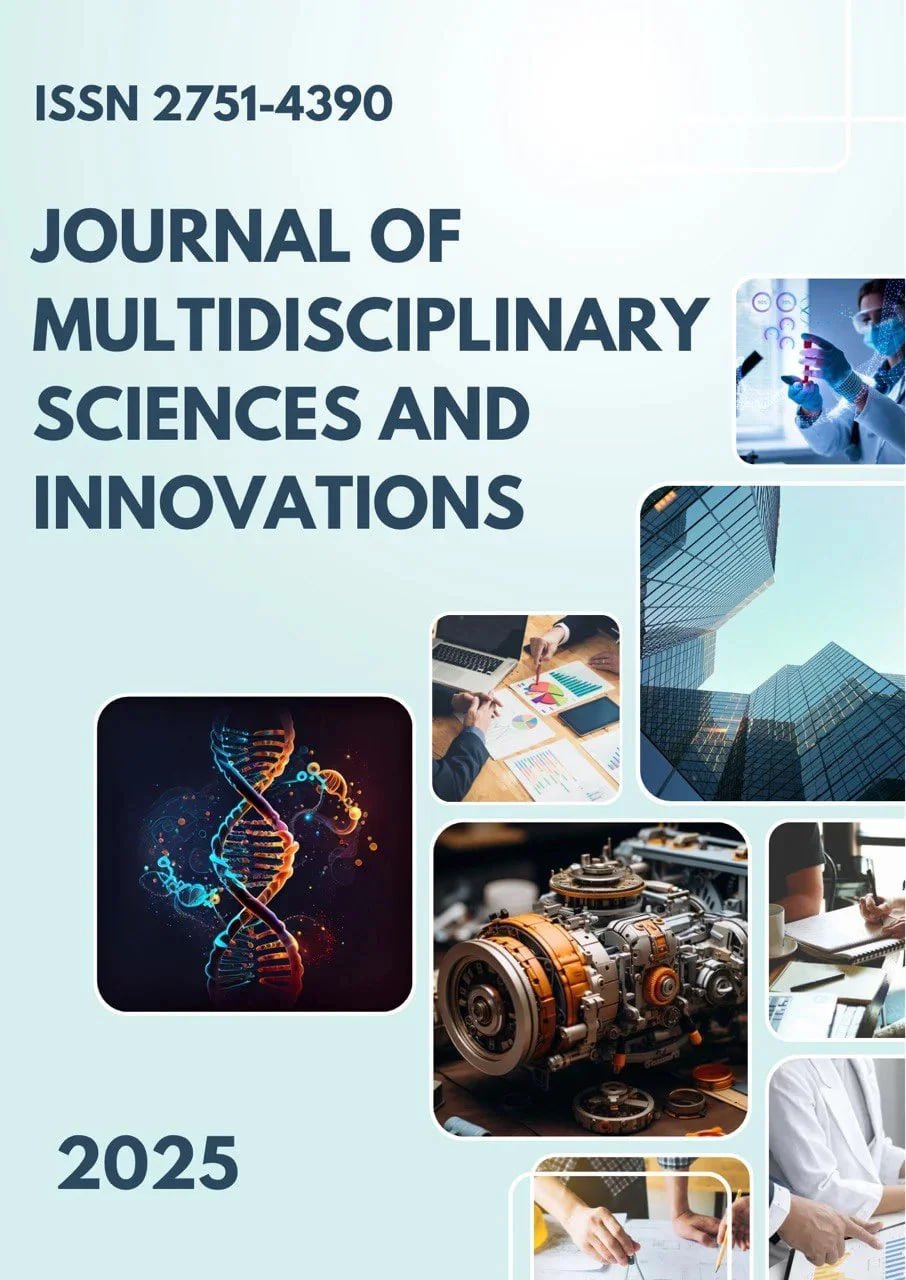"ENVIRONMENTAL EFFICIENCY OF GREEN TRANSPORTATION UNDER THE BELT AND ROAD INITIATIVE: AN EMPIRICAL STUDY"
Main Article Content
Abstract
This article studies the impact of green transport systems on environmental quality in the context of economic infrastructure development within the framework of the ‘One Belt, One Road’ initiative. The need to implement economic infrastructure projects in an environmentally friendly manner is urgent today. The study uses a semi-experimental approach. The results show that green transport, although a stabilizing factor for environmental quality, leads to an increase in CO₂ emissions. This situation is explained on the basis of the theory of development compatibility. In conclusion, the study highlights the following as a positive conclusion: the development of green transport in developing countries reduces the increase in carbon emissions.
Downloads
Article Details
Section

This work is licensed under a Creative Commons Attribution 4.0 International License.
Authors retain the copyright of their manuscripts, and all Open Access articles are disseminated under the terms of the Creative Commons Attribution License 4.0 (CC-BY), which licenses unrestricted use, distribution, and reproduction in any medium, provided that the original work is appropriately cited. The use of general descriptive names, trade names, trademarks, and so forth in this publication, even if not specifically identified, does not imply that these names are not protected by the relevant laws and regulations.
How to Cite
References
[1] X. Chen, A. Guo, Z. Miao, P. Zhu, Assessing the performance of the transport sector
within the global supply chain context: decomposition of energy and
environmental productivity, Appl. Energy 358 (2024) 122615, https://doi.org/
10.1016/J.APENERGY.2023.122615.
[2] Q. Lu, K. Fang, R. Heijungs, K. Feng, J. Li, Q. Wen, Y. Li, X. Huang, Imbalance and
drivers of carbon emissions embodied in trade along the Belt and Road Initiative,
Appl. Energy 280 (2020) 115934, https://doi.org/10.1016/J.
APENERGY.2020.115934.
[3] C. Nedopil Wang, China Belt and Road Initiative (BRI) Investment Report 2021,
2022.
[4] Z. Lv, W. Shang, Impacts of intelligent transportation systems on energy
conservation and emission reduction of transport systems: a comprehensive review,
Green Technol. Sustain. 1 (1) (2023) 100002, https://doi.org/10.1016/J.
GRETS.2022.100002.
[5] S. Singh, S.P. Upadhyay, S. Powar, Developing an integrated social, economic,
environmental, and technical analysis model for sustainable development usinghybrid multi-criteria decision making methods, Appl. Energy 308 (2022) 118235,
https://doi.org/10.1016/J.APENERGY.2021.118235.
[6] A. Omri, B. kahouli, M. Kahia, Environmental sustainability and health outcomes:
do ICT diffusion and technological innovation matter? Int. Rev. Econ. Finance 89
(2024) 1–11, https://doi.org/10.1016/J.IREF.2023.09.007.
[7] Z. Zhang, Y. Zhao, H. Cai, T. Ajaz, Influence of renewable energy infrastructure,
Chinese outward FDI, and technical efficiency on ecological sustainability in belt
and road node economies, Renew. Energy 205 (2023) 608–616, https://doi.org/
10.1016/J.RENENE.2023.01.060.
[8] M. Kahia, A. Omri, Oil rents and environmental sustainability: do green
technologies and environmental technological innovation matter? J. Open Innov.:
Technol. Mark. Complex. 10 (3) (2024) 100366 https://doi.org/10.1016/J.
JOITMC.2024.100366.
[9] Y. Liu, N. Nath, A. Murayama, R. Manabe, Transit-oriented development with
urban sprawl? Four phases of urban growth and policy intervention in Tokyo, Land
Use Pol. 112 (2022) 105854, https://doi.org/10.1016/J.
LANDUSEPOL.2021.105854.
[10] F. Liu, Y. Khan, M. Marie, Carbon neutrality challenges in Belt and Road countries:
what factors can contribute to CO2 emissions mitigation? Environ. Sci. Pollut. Res.
30 (6) (2023) 14884–14901, https://doi.org/10.1007/S11356-022-22983-0/
TABLES/11.
[11] A.E. Atabani, I.A. Badruddin, S. Mekhilef, A.S. Silitonga, A review on global fuel
economy standards, labels and technologies in the transportation sector, Renew.
Sustain. Energy Rev. 15 (9) (2011) 4586–4610, https://doi.org/10.1016/J.
RSER.2011.07.092.
[12] M. Kahia, A. Omri, B. Jarraya, Does green energy complement economic growth for
achieving environmental sustainability? Evidence from Saudi Arabia,
Sustainability 13 (1) (2020) 180, https://doi.org/10.3390/SU13010180. 2021,
Vol. 13, Page 180.
[13] F.U. Rehman, M.M. Islam, Q. Miao, Environmental sustainability via green
transportation: a case of the top 10 energy transition nations, Transp. Policy (Oxf)
137 (2023) 32–44, https://doi.org/10.1016/J.TRANPOL.2023.04.013.
[14] J.A.F. Machado, J.M.C. Santos Silva, Quantiles via moments, J. Econ. 213 (1)
(2019) 145–173, https://doi.org/10.1016/J.JECONOM.2019.04.009.
[15] M. Prestipino, F. Salmeri, F. Cucinotta, A. Galvagno, Thermodynamic and
environmental sustainability analysis of electricity production from an integrated
cogeneration system based on residual biomass: a life cycle approach, Appl. Energy
295 (2021) 117054, https://doi.org/10.1016/J.APENERGY.2021.117054.
[16] M. Kahia, A. Omri, B. Jarraya, Green energy, economic growth and environmental
quality nexus in Saudi Arabia, Sustainability 13 (3) (2021) 1264, https://doi.org/10.3390/SU13031264. 2021, Vol. 13, Page 1264.

